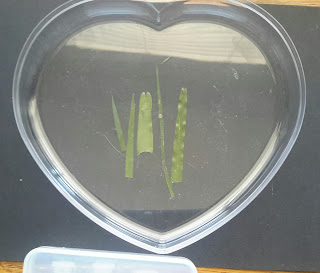I'm writing like crazy, and the computer starts falling over. I press on, using the MacBook, that starts ruining my back, so I buy a new computer, and now I have to master Win 10, tame it and make it look like Windows 3.1.
I'm almost there. Here's something off the spares pile, OK?
* * * * * * * * * * *
 |
| Housefly, stitched together from a dozen or so shots taken at different focal lengths through a monocular microscope. Software of choice was ImageJ which is public domain and free: get it at https://imagej.nih.gov/ij/ |
High summer sees rainy periods, and soon after, the
mosquitoes begin to swarm in our gardens, making people complain. Around the world, every land seems to claim
to have the worst, most bitingest mosquitoes.
So how do Australian ‘mossies’ rank internationally?
Oscar Comettant was a French visitor, who wrote this just
over a hundred years ago: ‘In Australia, as everywhere, the mosquitoes sing
their irritating “perpetual melody”, an imitation of Wagner.’ I think we may conclude from this that M.
Comettant disliked Wagner, rather more than the mosquitoes.
But then Charles Sturt was an early English explorer, who
wrote this in about 1830:
‘We . . should have been
tolerably comfortable, had not the mosquitoes been so extremely
troublesome. They defied the power of
smoke, and annoyed me so much, that, hot as it was, I rolled myself in my boat
cloak, and perspired in consequence to such a degree, that my clothes were wet
through, and I had to stand at the fire in the morning to dry them.’
Yet Anthony Trollope, writing in 1873, when he was already a
well-known novelist, dismissed our mossies as a mere nothing:
‘And I may add to this that
Australian mosquitoes, of which I had heard much and which I feared greatly,
were never so venomous to me as mosquitoes have been in other countries, nor
are they in force for so large a proportion of the year. The mosquito of Australia is a poor, impotent
and contemptible creature as compared, for instance, with the mosquito of the
United States.’
On the other hand, Mrs Louisa Meredith was a Sydney resident
in the 1840s, living almost on the site of the Olympics in the year 2000. She wrote:
‘But worse than [the flies]
are the mosquitoes, nearly as numerous, and infinitely more detestable to those
for whose luckless bodies they form an attachment, as they do to most new
comers; a kind of initiatory compliment which I would gladly dispense with, for
most intolerable is the torment they cause in the violent irritation of their
mountainous bites.’
It seems that their judgements are all highly subjective,
perhaps being related to skin sensitivity.
These days, the mosquito is a minor problem in the cities, for most
houses are entirely screened against insects, but they still remain a serious
pest out of doors. Malaria occurs only
in the far north of Australia, though global warming may affect that in the
future, spreading that disease into major population centres.
In parts of Australia, we need to set up traps for mosquitoes,
in order to sample them on a regular basis.
There are a number of very nasty local virus infections spread by
mossies, and the traps help us to find out when these diseases are likely to be
a problem.
The traps use dry ice (solid CO2) to bring the
mosquitoes in close to the trap (mosquitoes fly upwind when they meet a CO2 gradient), then drawing them in with a small
electric lamp, as the mosquitoes end their run by looking for infrared
(warmth).
This is a nifty way to get close to a mammal, but it may be
a problem for the main thesis of Michael Crichton's ‘Jurassic Park’, that
mosquitoes in amber are likely to carry dinosaur blood. Unless Bob Bakker is right, and the dinosaurs
were warm-blooded. . ..
In the Riverina area, a single trap may score as many as
7000 mossies in a night. These are
sorted, blended, and tested for viral markers that indicate how serious the
danger of viral disease is at any given time.
All of which is by way of an introduction to a bizarre
mosquito that I rediscovered with my young son recently, when we dipped a net
into a brine pool, and found a huge haul of mosquito wrigglers. Just one mosquito species lays its eggs in
brine pools beside the sea, where the wrigglers thrive, just above the high
tide mark. It appears that only this
species, Aedes australis, has this
ability. The trick makes sense, for they
have the same advantage as a lone kid in a lolly-shop: all those resources, and
nobody to compete with for them!
The brine pools arise from salt spray that drifts and
splashes into a hollow, later to evaporate, leaving the salt behind. In extreme cases, the pools may be encrusted
with salt crystals, but even this does not deter these hardy brutes. I brought some home, to keep in test tubes
with different brine concentrations, serially diluted. The three highest salt levels killed normal
wrigglers within an hour, but did nothing at all to A. australis, which even did quite nicely in distilled water.







